It’s no secret I’m fond of Huawei’s hardware, but it hasn’t always been the case. I first came around to Huawei’s phone design with the P10, which was released a couple of years ago now. Before that, I found their phone design a bit boring, a bit industrial, and lacking inspiration.
I remember many times Dan trying to convince me of the benefits of Huawei’s earlier phones, and I just wasn’t interested. The phones didn’t speak to me.
With the P10 that changed. With the P20 Pro last year, that changed further – I enjoyed the design and features so much that, unable to get a review device from Huawei (because Jason had it), I went and bought my own, and I loved it. It had the best camera around, the software was quick (if not perfect) and the battery life was incredible.
Fast forward to April 2019, and I’ve upgraded. I used the Mate 20 Pro for a while, but the P30 Pro is better in the ways that matter to me. I’m not surprised DxOMark rated it the best camera around; it is. I’m not surprised Huawei put a massive effort into marketing this phone – it’s easily the best they’ve made.
We’re a long way from the uninspired, bland designs of just a few years ago. This is a phone that looks amazing, feels great, works brilliantly, and is a joy to use.
If you don’t need any further detail, stop reading here, and when the P30 Pro is on sale, go buy one. It’s priced the same as last year’s Mate 20 Pro (when it launched, at least), and it’s better all around.
For those that do like the detail, read on.
What’s inside?
Internally, at least, the P30 Pro shares more in common with last year’s Huawei Mate 20 Pro than not. You’re looking at the same chipset (Kirin 980), slightly more RAM (on some variants) and the same storage options. Our review unit has 8GB of RAM and 256GB of storage, putting it at the top of the pile. Android 9 is still inside, with an updated EMUI skin on top (EMUI 9.1, to be precise).
| Huawei P30 | Huawei P30 Pro | |
|---|---|---|
| Operating System | Android 9 (Pie) | Android 9 (Pie) |
| Display | 6.1-inch Huawei FullView OLED Display | 6.47-inch Huawei FullView Curved OLED Display |
| Body | 8.41mm thick, 165g | 7.57mm thick, 192g |
| Camera | Rear: Leica Triple Camera (40 MP HUAWEI SuperSpectrum Sensor (Wide angle, f/1.8) + 16 MP Ultra-wide angle (f/2.2) + 8 MP Tele lens) Front: 32MP (f/2.0) | Rear: Leica Quad Camera (40 MP SuperSpectrum Sensor (Wide angle, f/1.6) + 20 MP Ultra-wide angle (f/2.2) + 8 MP Tele lens (f/3.4) + HUAWEI Time-of-Flight (TOF) Camera) Front: 32MP (f/2.0) |
| Processor | Kirin 980 | Kirin 980 |
| Memory/Storage | 6GB RAM/128GB storage | 8GB RAM/256GB storage |
| Sim Card | Single SIM/Dual SIM options | Single SIM/Dual SIM options |
| Battery | 3,650mAH battery | 4200mAh battery, 40W SuperCharge, 15W Wireless Supercharge 2.0, Reverse Wireless Charging |
| Network | Enhanced 4X4 MIMO / CA, LAA, LTE Cat.18 | Enhanced 4X4 MIMO / CA, LAA, LTE Cat.18 |
| Payment | NFC, MST | NFC, MST |
| Sensors | In-screen fingerprint sensor, Face Unlock | In-screen fingerprint sensor, Face Unlock |
| Audio | Acoustic display technology |
Despite the few changes, this phone does feel significantly quicker than the Mate 20 Pro. Huawei have done some work under the hood at enhancing EMUI to do more, get in the way less, and do everything faster, and it shows here. I can’t think of a single occasion over the last few weeks when the P30 Pro has lagged, stuttered, crashed or slowed me down. If anything, my hands can’t keep up.
All this is wrapped in a device that’s much the same size as the Mate 20 Pro – albeit perhaps a bit broader across the shoulders. At 73.4 mm across, it is about 1.1mm broader, and it is noticeable, but that’s about it. Height-wise its about the same (158 v 157.8 mm) and it’s slightly thinner too. Broadly speaking, the size doesn’t differ.
The display is larger, though – at 6.47-inches across, there’s an extra 2cm square available, and though the screen resolution is a little less (1,080 x 2,340 vs 1,440 x 3,120), you really don’t notice it. Visually, there’s little difference.
The biggest difference is the notch. It was widely acknowledged that the Mate 20 Pro notch was simply too large, and it covered almost all of the Android notification bar, meaning you had to get used to a phone working differently. Huawei’s reps on post-launch panels confirmed they didn’t especially like it, but it was a necessity to fit the required technology somewhere. Leica and Porsche Design, both known for having some design nous, both agreed that the design wasn’t ideal.
With the P30 Pro, that ultra-wide notch is a thing of the past, and thank goodness. Instead of a wide inconvenience, the P30 Pro features a small teardrop notch just large enough to fit a camera. Of course, there’s a tradeoff here – there’s only a front-facing camera, no earpiece, no sensors, IR blasters, dot blasters or anything.
Up side? You get a good front-facing camera (albeit fixed focus, see below) and you get your status bar back. Down side? Face unlock is less secure. That’s about it.
Wait, you said no earpiece Chris? Yes, yes I did. Huawei have integrated the earpiece with the display, so you simply hold it up to your head and use it like a normal phone and it just works, using the glass panel as the speaker cone. Sounds futuristic, but it’s not – it’s just a great way to use what’s available without adding more.
Hardware wise, at least, there’s not too much else to note. There’s no 3.5mm headphone jack – eschewed for a USB-C – 3.5mm adaptor in the box – and there’s the usual volume rocker and power on the right. There’s also an IR blaster on the top edge of the phone so you can control your TV, A/C and more with your phone.
Oh, and lucky last. Huawei throws a soft, clear TPU case in the box to protect your P30 Pro from day one.
How’s the P30 Pro camera?
Absolutely stunning, and given the P-series is Huawei’s photographic flagship, you should expect no less.
I’ve written a bit about the P30 Pro camera already, both in my hands-on review and also sharing some photo samples across the world. By this point, I don’t have a lot to add. The camera hasn’t once disappointed me, and though it’s fudged a few photos because I was a bit careless (not framing properly, not composing properly, etc), overall this is the camera to have, bar none.
Huawei has long drawn comparisons on stage between its camera prowess and others, but in 2019 it went as far as naming its competitors and thoroughly shaming them. Apple’s camera (and more recently Samsung’s) have held the mantle for a long time, but that time is over; the best smartphone camera you can buy is in a Huawei smartphone, and currently, it’s in a P30 Pro.
With low-light (almost no-light) performance that competes with night vision equipment, brilliant performance in morning, noon and dusk, there’s virtually nothing that the Huawei P30 Pro camera does not handle well.
What you need to know is that there’s three rear cameras. The main camera is a 40MP “SuperSpectrum” sensor with a nice fast f/1.6 aperture lens. On wide-angle duty is a 20MP sensor with f/2.2 lens, and there’s an 8MP telephoto lens at f/3.4 with 5x optical zoom.
That’s not the full story, but it’s the main bit. The super spectrum sensor is what dazzled me, turning night quite literally into day. These three sample photos were taken in relative darkness, and the P30 Pro just lit them right up.
For a comparison, here’s the same photo taken using P30 Pro’s superspectrum sensor, and taken on the same camera but in pro mode, which suppresses the low-light enhancements (unless you manually enable them):
The telephoto lens also needs the spotlight; Huawei has delivered 5X pure optical zoom in a smartphone, and that winds out to 10X in a very capable hybrid zoom arrangement. If you wind that out further, Huawei offers 50X digital zoom which is, mostly, pretty good (though the quality isn’t 100% perfect).
Most importantly, you can get away without a tripod for night shots and long-range photos, thanks to dual image stabilisation from OIS and also AI assist. You’ll want a tripod for some features, like star trails and getting perfect night photos, but for most situations you can simply get away without.
Other modes worthy of mention include a beautiful portrait mode which uses the TOF sensor to get a beautiful background defocus / bokeh effect, and that wide-angle lens doubles as a perfectly useful super macro lens as well:
Of course there’s a front-facing selfie camera, but I feel manifestly unqualified to talk about its relative merits. It works, it takes front-facing photos, what else can I say?
Other reviewers have spoken less favourably of Huawei P30 Pro’s video capabilities, and I feel unable to extensively comment here as I simply don’t film a lot of video (and I’m not likely to start). The only observation I’ll make is that the video seems to inexplicably jump from 30fps to 60fps, meaning you get super smooth video in some places, and (relatively) janky video in others. It’s a frustration, but in will affect others more than it does me.
How’s the software experience?
With the rapid iteration between devices, there’s bound to be areas that don’t move as quickly as others, and this is one of them – but it isn’t a bad thing.
Whereas the Mate 20 Pro launched with EMUI 9, the Huawei P30 Pro comes with EMUI 9.1, and while that point release sounds like it might be something significant, honestly it doesn’t feel or look any different to me.
This isn’t a bad thing. EMUI – like many other OEM skins – used to be a bit over the top, some even remarked that it was iOS-ish. In 2018 (and 2019) this really isn’t the case anymore; EMUI is really no different to OneUI from Samsung. It adds a slightly different visual layer over Android, but not one that makes it any worse. I’d argue it actually makes it more useful than stock Android .. but everyone has their own tastes.
Probably the only thing that annoys me a little about Huawei’s EMUI (and software in general) is its overly aggressive power saving measures. From frequent “App Is Using Power” notifications, to closing apps in the background almost as soon as you switch out of them, Huawei’s power management can be a bit over the top.
Fortunately, these settings can be changed, but what it means for the average customer is a phone with a battery that’ll last forever … but not for all the right reasons. When / if this becomes annoying, the user need only open the app settings for particular apps and enable/disable power management as required.
Out of the box, I’ve had to do this with Lastpass so that the accessibility service isn’t constantly disabled, but it’s a one-time setting and now everything just works fine. If you’re a frequent social media user, you might want to exempt some of those apps too, because reloading them from scratch can be a little slower.
Otherwise, though, Huawei’s EMUI is fine, and there’s really nothing to complain about. So much of what you see on a smartphone is your chosen apps, and the OS-level interface is either rarely seen, or rarely noticed. It might be a bit of a change coming from iOS, but what isn’t?
Anyone else coming from another Android will have no issues here.
So it all sounds good .. what isn’t?
Truthfully, there isn’t much about the P30 Pro that I find troubling, annoying or bad. The glass front and back don’t mark easily, the included case helps, the software is quick and efficient, the battery lasts forever, and the camera is top notch.
Video recording – as noted above – is a bit jumpy, but it strikes me as something easily fixed with a software update (it isn’t hardware related). The move to an in-screen ultrasonic earpiece is quite cool, but the downside is that it isn’t especially loud. If you’re in a noisy environment, you might find the in-screen audio a little quiet. As someone who makes most calls either with headphones on (or in the car) I hadn’t noticed this until more recently, but it’s definitely noticeable.
If you’re a bit hard of hearing, and you make a lot of phone calls, this mightn’t be the best move for you – you may struggle to hear calls clearly. There are plenty of louder phones out there, but you can work around it to get the other features if you want – use the speaker phone, use Bluetooth or wired headphones, or your car’s Bluetooth.
In a month, it’s affected precisely two phone calls for me, so your mileage may vary.
Others have remarked at the slightly lower screen resolution on the P30 Pro compared to the Mate 20 Pro released last year; truth be told, before I actually looked more closely at the spec sheet, I had no idea this was actually the case. I guess I didn’t notice.
Probably the only other gripe is the front-facing selfie camera. With a fixed focus, standard lens, I feel other phones can and do better here. The Pixel 3, for all its poor choices, has a wide-angle front-facing selfie camera and that’s simply excellent. By comparison, the P30 Pro can take photos from the front, but I just don’t think they’re as good. For a Photography-focused phone, Huawei could’ve done a little more here, but it’s all about compromises. Doing more would mean a bigger notch that no one wants.
So it’s pretty good then?
Yes.
There’s only a few of this year’s smartphones I haven’t used yet (as most were at MWC 2019) and having now spent a bit of time with Huawei’s P30 Pro, if you want the best phone you can get, you buy this.
Google’s Pixel 3 is disappointing at best. It takes a great photo, and night sight is pretty incredible, but it feels let down by a fairly unimaginative design, low RAM and attendant memory management issues. As good as its camera powered by AI is, it can’t complete with three lenses and a superspectrum sensor.
Samsung’s Galaxy S10+ doesn’t do enough remarkable for a 2019 flagship. It’s photographic powers – one of the things users care about most – are a distant second, perhaps third. Samsung still – after 10 years – haven’t quite figured out a proper all-day battery life experience. Perhaps after being burned by the Note 7 battery issues, they’ve become more conservative, but the user experience isn’t great. A good phone, to be sure, but it isn’t the best.
We haven’t had too much time yet with LG’s 2019 flagship smartphones, but you also can’t buy them yet, so they’re not really in contention. Early suggestions suggest that they follow the typical LG path; they do everything well, but nothing stands out. I hope to be proven wrong, as LG was one of my favourite smartphone brands as recently as a couple of years ago.
What other options are there at the top? Right now, not many. Other choices represent compromises; a lesser camera in almost every case, perhaps some lesser performance, and for those things you might make a saving.
However, as Huawei’s P30 Pro is available from all carriers on a range of plans (as well as outright in store), there’s so many ways to get your hands on the best smartphone around that really the only decision point is yours.
If mobile photography is your number one priority, then you buy the Huawei P30 Pro without a moment’s hesitation. If an all-day battery life matters, then you’ve got a couple of choices, but this one is an easy one. If you want it all wrapped up in one … you get the idea.
Going back to what I said at the beginning .. a couple of years ago I wouldn’t even consider a Huawei phone. The Huawei P10 changed that for me. I liked the P9, but not enough to use it as my daily phone. With the P20 Pro, I went and bought my own.
With the P30 Pro, I’d gladly do the same and give the review device to another member of our team to play with. It’s not often I’ll put $1,599 of my own where my mouth is in a review, but with the P30 Pro, I would.
If you buy one, you won’t be disappointed.
Disclosure Statement
Huawei has allowed Ausdroid to retain the P30 Pro for long-term review.


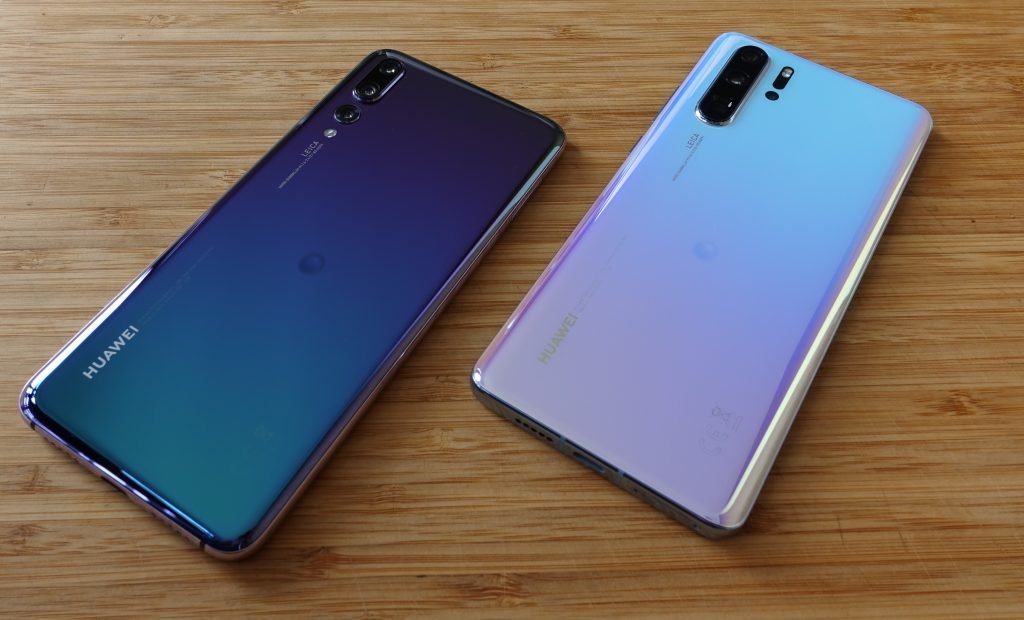
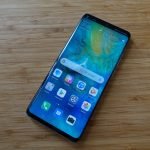
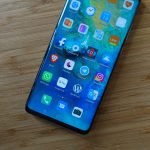
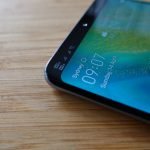


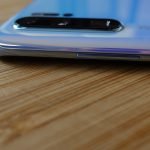
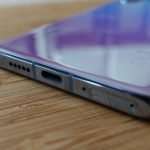


























Anything more specific than “forever” for the battery usage? To me that speaks to maybe 3 days of mid-light use (web browsing, facebook/Messenger, emails – intermittently), would that be accurate? And say two days of the same plus YouTube/gaming?
I get a full day out of the P30 Pro when I’m absolutely smashing it. You could easily get two with “normal person” use. Three… maybe if you’re using your phone very minimally.
Chris, thank you for your great review of Huawei’s P30 Pro phone. I especially liked how your review wasn’t 95% about video, how there’s “no 4K60” etc & gloss over STILLS/Low light etc. I too don’t do much video so when I see the heavy bias towards video in reviews over & over again I want to scream. Thanks for a breath of fresh air.
Pleasure. I too find the focus on video in smartphone reviews tedious at best; it’s not a huge use case for most people, so we don’t spend much time talking about it. Others do, but that’s up to them.
was it released already? no wonder its 4.9 rating. u guys rock
Released tomorrow.
What software experience? You go in your phone and you open your app. That’s your 2 seconds software experience.
Valid. Most of the time that’s all you’re using.
As a p20 pro owner I love the phone – this is definitely a step up but then again I think the galaxy s10 series is brilliant and the software experience is years ahead of Huawei for that alone I’d take the s10 or even the 10e over this.
nice advertorial though.
Not really, we don’t get paid for writing reviews (and we wouldn’t accept payment to write one either). I’ve used the S10+ and S10e (the latter more briefly, only on a stand at MWC) and frankly they do nothing for me.
Of course it was, it was disclosed as such. It’s common industry practice for brands such as Huawei, Samsung, Apple (and virtually all others in this space) to take journalists to launch events here and overseas.
It doesn’t make this a paid review. I’ve been to plenty of launches where the phone launched has been rubbish – a couple of them Huawei too, I might add – and the reviews have been less than favourable.
If you’re alleging that our review isn’t legit and that we’ve been bought by Huawei, you can kindly leave.
Have Huawei made any public commitments to OS or security updates for their latest phones?
It’s being done monthly or bimonthly.
https://ausdroid.net/2018/06/28/huawei-announces-bi-monthly-firmware-updates-facial-recognition-update-rolling-multiple-handsets/
Good reminder, Rod. Thanks. I note that only covers security updates so is great, so far as it goes. No commitment to OS updates?
I’ve had the P20 pro for nearly 12 months and the software and security updates have kept pace with the Galaxy s8 and more recently the S10, – so much improved on previous years.
Ditto, P20 Pro got updates bi-monthly and still does, so I expect the P30 Pro to do about the same.